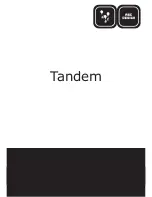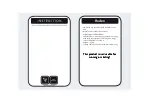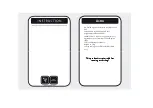
4-16
Cisco Wireless LAN Controller Configuration Guide
OL-9141-03
Chapter 4 Configuring Controller SettingsWireless Device Access
Enabling Dynamic Transmit Power Control
Enabling Dynamic Transmit Power Control
When you enable Dynamic Transmit Power Control (DTPC), access points add channel and transmit
power information to beacons. (On access points that run Cisco IOS software, this feature is called world
mode.) Client devices using DTPC receive the information and adjust their settings automatically. For
example, a client device used primarily in Japan could rely on DTPC to adjust its channel and power
settings automatically when it travels to Italy and joins a network there. DTPC is enabled by default.
Enter this command to disable or enable DTPC:
config
{
802.11a
|
802.11bg
}
dtpc
{
enable
|
disable
}
Configuring Multicast Mode
If your network supports packet multicasting you can configure the multicast method that the controller
uses. The controller performs multicasting in two modes:
•
Unicast mode—In this mode the controller unicasts every multicast packet to every access point
associated to the controller. This mode is inefficient but might be required on networks that do not
support multicasting.
•
Multicast mode—In this mode the controller sends multicast packets to an LWAPP multicast group.
This method reduces overhead on the controller processor and shifts the work of packet replication
to your network, which is much more efficient than the unicast method.
Understanding Multicast Mode
When you enable multicast mode, the controller does not become a member the multicast group. When
the controller receives a multicast packet from the wired LAN, the controller encapsulates the packet
using LWAPP and forwards the packet to the LWAPP multicast group address. The controller always
uses the management interface for sending multicast packets. Access points in the multicast group
receive the packet and forward it to all the BSSIDs mapped to the interface on which clients receive
multicast traffic. From the access point perspective, the multicast appears to be a broadcast to all SSIDs.
When the source of the multicast is a wireless client, the multicast packet is unicast to the controller. In
this case the controller makes two copies of the packet. One copy is the raw Ethernet packet that the
controller sends out to the interface for the wireless LAN on which the client is associated, enabling the
receivers on the wired LAN to receive the multicast traffic. The second copy of the packet is
LWAPP-encapsulated and is sent to the multicast group. In this case the source of the multicast also
receives the multicast packet, which helps the wireless client receive the multicast source.
Guidelines for Using Multicast Mode
Follow these guidelines when you enable multicast mode on your network:
•
The Cisco Unified Wireless Network solution uses some IP address ranges for specific purposes,
and you should keep these ranges in mind when configuring a multicast group:
–
224.0.0.0 through 224.0.0.255—Reserved link local addresses
–
224.0.1.0 through 238.255.255.255—Globally scoped addresses
–
239.0.0.0 through 239.255.255.255—Limited scope addresses
















































